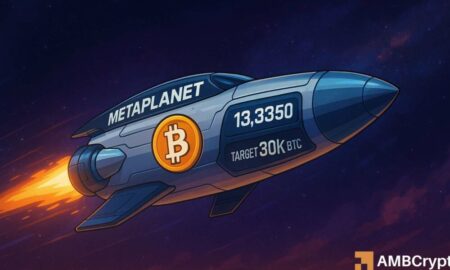Whale Inflows and Market Sentiment: A New Era for Bitcoin?
Recent developments in the cryptocurrency market have painted a fascinating picture for Bitcoin (BTC) enthusiasts and investors. In less than two weeks, Binance, one of the largest cryptocurrency exchanges in the world, has seen over 22,000 BTC flow into its reserves. This substantial increase—from 568,768 BTC on March 28 to 590,874 BTC by April 9—indicates heightened activity among investors. Factors such as macroeconomic uncertainties and the anticipation of the U.S. Consumer Price Index (CPI) announcement are likely behind this surge in inflows. While some analysts are wary, interpreting these inflows as potential sell pressure, others view them as strategic accumulation, possibly indicating that investors are gearing up for impending market volatility.
One noteworthy aspect of this market movement is the recent decline in the Stock-to-Flow (S2F) ratio, which dropped sharply by 16.66% in just 24 hours. This metric is instrumental in tracking Bitcoin’s scarcity by comparing its supply to the number of mined coins. The decline brought the S2F value down to approximately 1.0586 million, suggesting a reduced focus on Bitcoin’s scarcity model as a primary factor in its value. While historically, the S2F has aligned with long-term bullish trends in the cryptocurrency space, the current behavioral shift indicates that market participants are increasingly prioritizing inflation and interest rate factors over scarcity alone.
As the conversation around Bitcoin continues, the cryptocurrency’s price is currently experiencing a compressive phase, trading at $81,715.99—marking a 5.57% increase over the previous day. However, this recovery has not placed Bitcoin beyond the grip of a descending wedge pattern, as it tests a crucial resistance zone near $84,000. The support level around $76,000 has proven resilient, positioning Bitcoin in a critical area where a potential breakout could occur. Should the bulls succeed in surpassing the upper boundary, targets could rise to $102,000. However, if the support fails, a downward move towards $60,000 may unfold, making it imperative for traders to keep a close eye on this make-or-break zone.
Investor sentiment remains robust, supported by the MVRV (Market Value to Realized Value) ratio, which has climbed to 1.86—a 4.84% increase in just one day. This ratio helps gauge whether Bitcoin is over- or undervalued at any given time. A value above 1 is typically interpreted as a sign that holders maintain confidence, opting to hold their assets instead of selling at a loss. However, with the ratio trending upward, the potential for profit-taking also intensifies, underscoring the importance of monitoring sentiment shifts in real time.
In terms of wallet profitability, recent data reveals that approximately 75.90% of Bitcoin addresses are currently “in the money,” meaning holders are experiencing gains. Only about 23.01% of addresses are out of the money. This indicates that a significant majority of market participants are well-positioned, which can serve as an emotional buffer during market pullbacks. Additionally, the concentration of holders just below the market price contributes to a strong support zone likely to limit any substantial downside risk. Yet, with a considerable number of addresses nearing the breakeven point, significant drops may incite panic among less confident investors.
Overall, the trends and metrics indicate that strategic positioning prevails in the current market climate, outweighing fear-driven exits. The data suggests that a majority of holders remain in profit, the MVRV ratio supports a bullish outlook, and Bitcoin is adhering to critical support levels. In essence, rather than retreating from potential risks, whales appear to be making calculated bets, reinforcing the notion that “smart money” is quietly preparing for the next significant market shift, rather than fleeing the scene. As investors remain attentive, the next moves in the Bitcoin market could reveal broader trends that shape the cryptocurrency’s future trajectory.
















